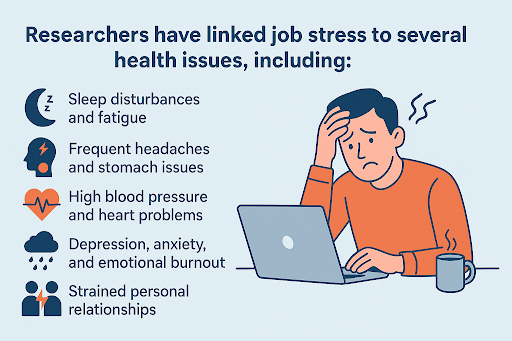Workplace Stress – Silently Killing the Market
Author: Team xMonks | Published on: Mon, 15 Apr 2024
Stress at the workplace has matured into one of the biggest, silent, yet effective killers of this generation. Much of it happens because we cannot differentiate between pressure (which can motivate) and stress (which can deflate); it is a thin grey line indeed. Understanding stress requires understanding one key fact—often, stress is our response to change. Just as change can be managed, so can stress!
According to the World Health Organisation (WHO), workplace stress arises when work demands exceed an individual's knowledge and abilities, challenging their ability to cope. Stress worsens in environments where employees lack support from supervisors and colleagues or have little control over work processes.
Pressure vs. Stress in the Workplace
Pressure in the workplace is inevitable due to modern job demands. When perceived as acceptable, pressure can keep workers alert, motivated, and productive. However, excessive or unmanageable pressure transforms into stress, which harms both employees' health and business performance.
Common Causes of Work-Related Stress:
- Poor work organization (job design and management systems).
- Lack of control over work processes.
- Unclear work roles and responsibilities.
- Unsatisfactory working conditions.
- Lack of support from colleagues and supervisors.

Workplace Stress Hazards
Work stress can generally be categorized into two types:
1. Work Content
- Job monotony and lack of variety.
- Unmanageable workload and time pressure.
- Strict or unpredictable working hours.
- Lack of participation in decision-making.
2. Work Context
- Job insecurity and lack of career growth.
- Unclear job roles and conflicting expectations.
- Poor interpersonal relationships and workplace bullying.
- Lack of leadership and organizational clarity.
- Poor work-life balance policies.
Symptoms of Workplace Stress
Researchers have linked job stress to several health issues, including:
- Sleep disturbances and fatigue.
- Frequent headaches and stomach issues.
- High blood pressure and heart problems.
- Depression, anxiety, and emotional burnout.
- Strained personal relationships.
The impact of stress on chronic diseases is subtle but significant. While stress manifests differently in each individual, recognizing early symptoms is crucial. Future discussions will explore effective strategies for managing workplace stress.
Frequently Asked Questions
How does workplace stress affect leaders?
It causes health issues like hypertension, reducing productivity and effectiveness.
Why do leaders avoid seeking help?
Many fear appearing weak, which worsens stress and relationships.
What stress-relief strategies are recommended?
Meditation, therapy, and leadership coaching prioritize mental health.
How can coaching help manage stress?
Coaches provide a safe space to develop coping mechanisms and foster positivity.
Why is stress management critical for organizations?
It improves well-being, team performance, and workplace culture.




.png)